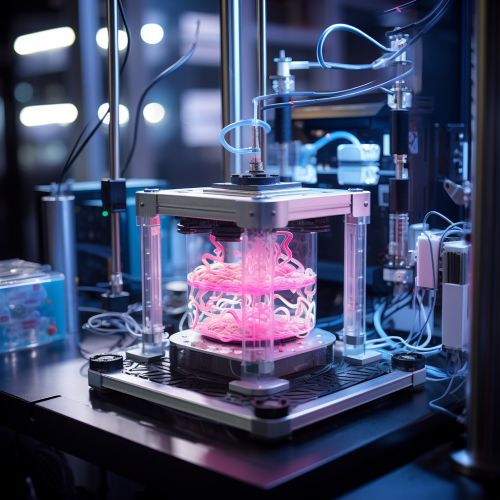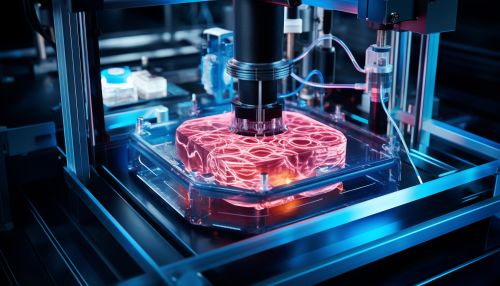Advances in 3D Bioprinting of Human Tissues
Introduction
3D bioprinting of human tissues represents a significant advancement in the field of regenerative medicine. This technology allows for the creation of complex, three-dimensional structures that mimic the natural architecture of human tissues and organs. The process involves the use of bioprinters to deposit layers of biomaterials and cells to construct the desired tissue. This article delves into the recent advances in this field, exploring the techniques, materials, applications, and challenges associated with 3D bioprinting of human tissues.


Techniques
There are several techniques employed in 3D bioprinting, each with its unique advantages and limitations. The most commonly used methods include inkjet bioprinting, laser-assisted bioprinting, and extrusion bioprinting.
Inkjet Bioprinting
Inkjet bioprinting is a non-contact printing technique that uses thermal or piezoelectric actuation to deposit droplets of bioink onto a substrate. This method is known for its high speed and low cost, making it suitable for large-scale tissue fabrication.
Laser-Assisted Bioprinting
Laser-assisted bioprinting involves the use of laser pulses to generate high-pressure bubbles that propel bioink onto a collector substrate. This technique offers high resolution and precision, allowing for the creation of complex tissue structures.
Extrusion Bioprinting
Extrusion bioprinting uses a mechanical or pneumatic dispensing system to extrude continuous strands of bioink. This method is particularly useful for printing cell-laden hydrogels and is capable of producing large tissue constructs.
Biomaterials
The choice of biomaterials is crucial in 3D bioprinting. These materials, often referred to as bioinks, need to possess certain properties such as biocompatibility, printability, and mechanical stability. Commonly used biomaterials include hydrogels, decellularized extracellular matrix, and polymeric materials.
Hydrogels
Hydrogels are water-swollen networks of polymer chains that mimic the natural extracellular matrix of tissues. They provide a supportive environment for cell growth and differentiation.
Decellularized Extracellular Matrix
Decellularized extracellular matrix (dECM) is derived from tissues or organs that have been stripped of their cells. This material retains the complex composition and architecture of the native ECM, providing a highly bioactive environment for cell attachment and growth.
Polymeric Materials
Polymeric materials, both natural and synthetic, are widely used in 3D bioprinting. These materials can be tailored to exhibit a range of mechanical and biological properties, making them suitable for a variety of tissue engineering applications.
Applications
3D bioprinting has a wide range of applications in both research and clinical settings. These include tissue engineering, drug discovery, disease modeling, and personalized medicine.
Tissue Engineering
In tissue engineering, 3D bioprinting is used to create functional tissues and organs for transplantation. This has the potential to address the shortage of donor organs and improve outcomes for patients with organ failure.
Drug Discovery
3D bioprinted tissues can be used for drug testing and development. These tissues provide a more physiologically relevant model than traditional 2D cell cultures, improving the accuracy and efficiency of drug screening.
Disease Modeling
3D bioprinting can be used to create disease models for studying the pathogenesis of various conditions. These models can provide insights into disease mechanisms and facilitate the development of new treatments.
Personalized Medicine
In personalized medicine, 3D bioprinting can be used to create patient-specific tissues and organs. This can improve the efficacy and safety of treatments, as well as reduce the risk of immune rejection.
Challenges and Future Directions
Despite the significant progress made in 3D bioprinting, several challenges remain. These include the development of suitable bioinks, the improvement of printing resolution and speed, and the establishment of vascularization strategies for large tissue constructs. Furthermore, regulatory and ethical issues associated with the use of 3D bioprinted tissues and organs need to be addressed. As the field continues to evolve, it is anticipated that these challenges will be overcome, paving the way for the widespread use of 3D bioprinting in medicine and research.
